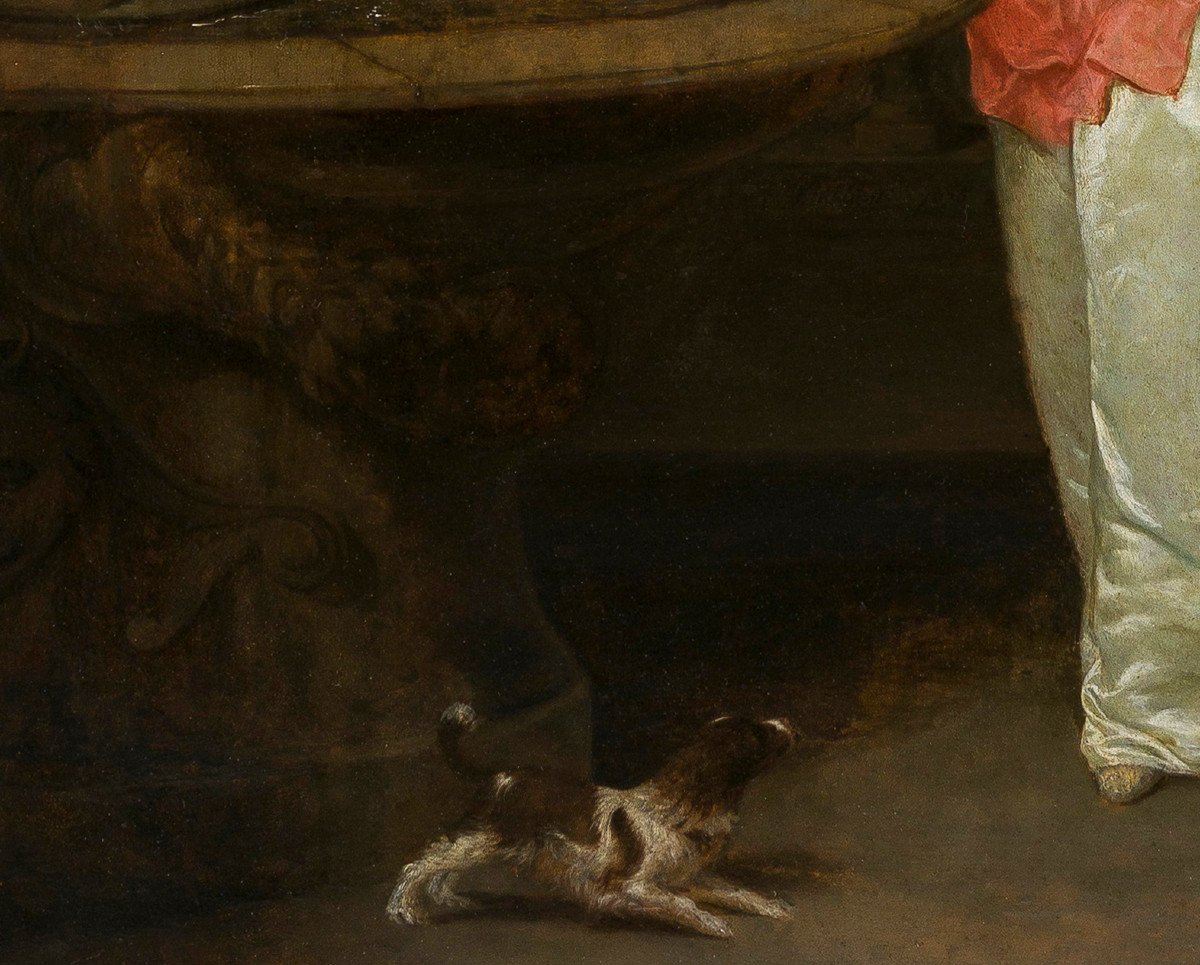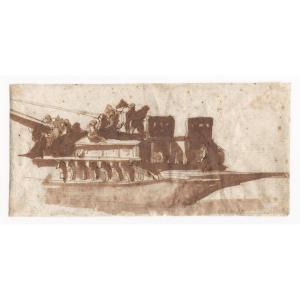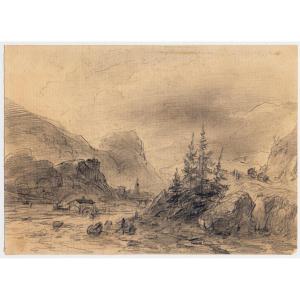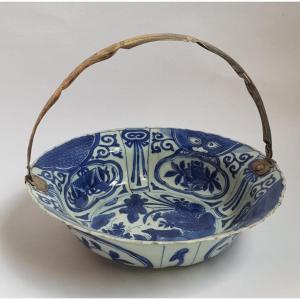Portrait of a Lady attended by a Black Pageboy
Oil on copper, 57.5 x 49 cm (including frame 75 x 66 x 5 cm)
Signed and dated ‘I. VERKOLJE 1676’
Provenance
Anonymous sale, Sotheby’s Amsterdam, 26 April 1977, lot 140, repr. (sold fl. 13,000)
Anonymous sale, Christie’s, Amsterdam, 13 November 1990, lot 156, repr.
Private collection, France
***
Jan was born in Amsterdam in 1650 as the son of a locksmith, Benjamin Jacobsz Verkolje, and his wife Marritie Teunis; he was baptised in the Nieuwezijds Kapel on 9th February.1 The artists’ biographer Arnold Houbraken recorded in his Groote schouburgh of 1718-21 that Verkolje was hurt by a friend while playing “prikjes” or darts as a child, and as the injury on his ankle did not heal well he was bedridden for years, during which time he started making drawings after engravings – according to Houbraken, the wound was eventually cured by the physician, architect and inventor Francesco Giuseppe Borri (1626–1695), who lived in Amsterdam during the 1660s.2 He received additional education by the painters Jan Gerritsz van Bronckhorst and Jan Andrea Lievens (1644–1680), the son of Rembrandt’s associate Jan Lievens.
In the “rampjaar” (disaster year) 1672, Verkolje moved from Amsterdam to Delft, where he married Judith Voorheul and was a member of the Mennonite congregation He became a member of the guild of St Luke in the following year, and served as its Dean between 1678 and 1688. Verkolje’s pupils included his own sons, Nicolaes Verkolje and Jan II, and furthermore Albertus van der Burch, Willem Verschuring and Thomas van der Wilt. He sadly died at the young age of 43, when he was at the height of his artistic ability, and was buried in the Oude Kerk in Delft.
Verkolje was active as a painter, draughtsman and engraver – according to Houbraken, he discovered how to use the novel technique of mezzotint by himself. He painted refined genre scenes but was also highly valued as a portrait painter, but in Delft and in courtly circles in The Hague, but also further afield. He painted portraits of Hortense Mancini, Duchess of Mazarin, King James II of England, William III of Orange and Mary Stuart; in Delft, his clients included burgomaster and historian Dirk van Bleiswijk, the painter Pieter Jansz van Asch, and the celebrated scientist Antonie van Leeuwenhoek.
This portrait of a young lady is painted in small full-length on a large copper panel, a very smooth and durable support that allowed painters to work with particular fine detail. The lady, whose identity has been lost over time, is attended by a black pageboy, at the time a sign of great wealth and status. A similar black boy is shown in Verkolje’s portrait of Jacomina Le Pla, which dates to the same year (fig.).3
Pictures by Verkolje are preserved in the Rijksmuseum in Amsterdam, the Museum Prinsenhof in Delft, the Frans Hals Museum in Haarlem, the National Portrait Gallery in London and the Fraeylemaborg in Slochteren.
1. For Verkolje, see C.W. Fock, ‘Het portret van de kinderen van Pieter Teding van Berkhout door Jan Verkolje’, in: E. Buijsen, Ch. Dumas, V. Manuth (ed.), Face Book. Studies on Dutch and Flemish Portraiture of the 16th-18th Centuries. Liber Amicorum presented to Rudolf E.O. Ekkart on the occasion of his 65th Birthday, Leiden 2012, pp. 443-450 and Saur Allgemeines Künstlerlexikon: die bildenden Künstler aller Zeiten und Völker, Munich 1992-, vol. 112 (2021), p. 511.
2. Arnold Houbraken, De groote schouburgh der Nederlantsche konstschilders en schilderessen (…), The Hague 1718-21, vol III, pp. 282-86.
3. Oil on copper, 30.8 x 25.8 cm, formerly in the SØR Rusche Collection, sold at Sotheby’s, London, 19 September 2019, lot 42 (sold GBP 11,250)

















































 Le Magazine de PROANTIC
Le Magazine de PROANTIC TRÉSORS Magazine
TRÉSORS Magazine Rivista Artiquariato
Rivista Artiquariato